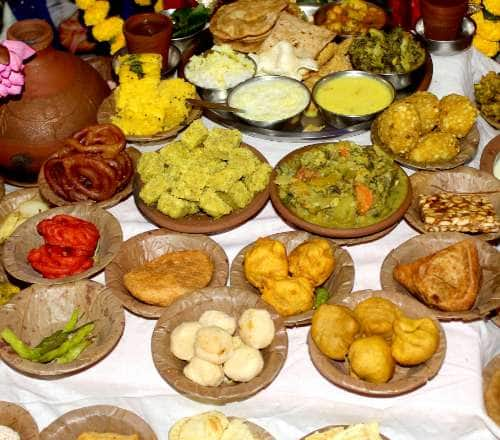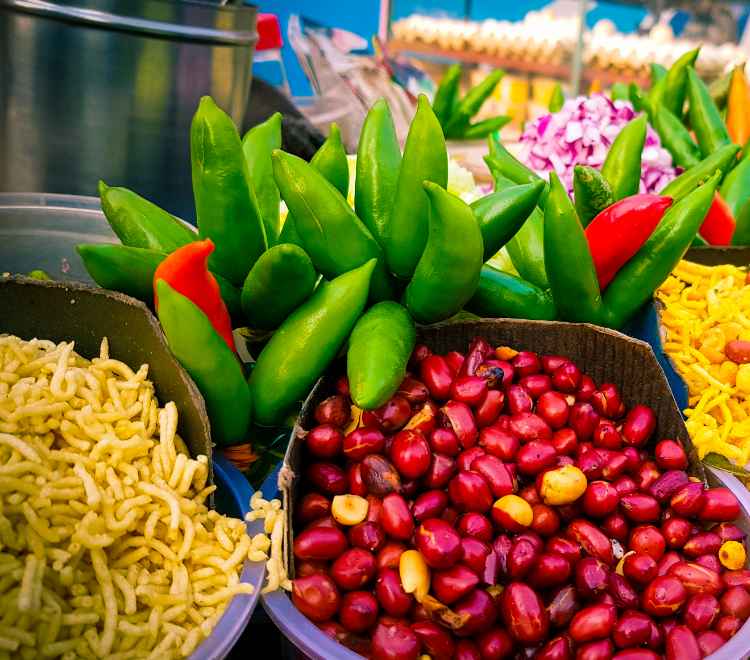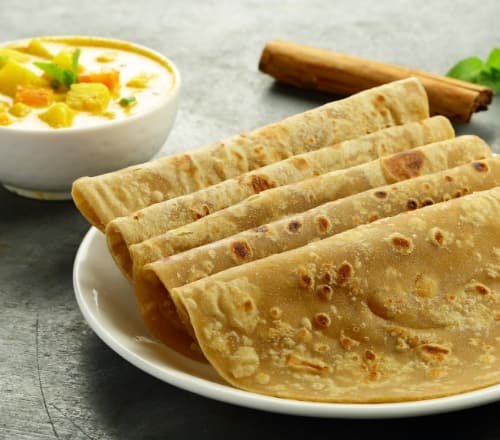Stay logged in to proceed with bookings, orders and offers.
On changing the terminal, you will loose items in your cart. Are you sure you want to change your terminal?
An aromatic tour through the history of spice in Kerala
Thousands of years ago, traders ventured to India in search of ‘Black Gold’, a prized possession that reflected status and wealth in the ancient world. The heart of the black gold was Kerala - the Land of Spices. The popularity of the humble black pepper of Kerala eventually earned India the moniker 'Land of Curries' and contributed to some of the best dishes in the world, like Hyderabadi Biryani and Butter Chicken.
Growing up, the colourful masala box in our kitchen enthralled me. I would wonder at the fragrant powders in the masala box, which is not just another cooking essential. It was an emotion. The globally popular Turmeric Latte was not just an upcoming trend. For ages, haldi-wala doodh has been our remedy for many illnesses. Ginger Tea and adrak wali chai are beyond their role as beverages; they are the morning pride of every Indian. The childhood memories of tangy tamarind and tadke wali dal, would not be possible if we didn't have these piquant flavours in our kitchens. The spices from Kerala make Indian cuisine fascinating and provide us with innumerable health benefits.
Allow me to take you on a spicy and aromatic walk through God's Own Country.
Read More
Read Less
It began at the port of Muziris when the merchants and explorers started eyeing the spice garden of India. Initially, Arab traders dominated the spice business through the Silk Route—the first trading route in the world.
At that time, black pepper was considered ‘Black Gold’ due to its extravagant demand and exorbitant rates. The price of Nutmeg, another important spice, was so high that even aristocrats couldn't afford spice shipments. In 1498, Vasco da Gama decided to explore the spices of the new world and made port with India.
Kerala’s stronghold over the world of spices is evident in the fact that even when the spice plantations were being shifted to other countries in the 1800s, the popularity of the region’s spices remained intact. Due to the authentic flavours and textures, Kerala is responsible for making India the largest producer and exporter of spices.
Let's learn a little bit more about the spices in a Malayali kitchen.
Called the king of spices, black pepper rules the world. Since black pepper plants prefer warm and humid climates, Kerala offers the best environment for substantial yield. The state is one of the largest producers of black pepper in India. Black peppercorns are obtained after extracting fresh green peppers from the plant and sun-drying them for a few days. Due to its fiery nature and anti-inflammatory properties, black pepper is often used instead of red chilli powder in Ayurvedic cooking.
After the king, comes the queen of spices with its slightly pungent but strong flavour. From chai to sherbet, biryani to kheer, paan to chewing gums, and perfumes to soaps, cardamom pods or Elaichi add a unique flavour and aroma to everything. Some huge spice markets in Kerala specialise in selling cardamoms. If you find this interesting, you should visit the spice market in Kumily, the largest spice market in the world. This also explains why the spice finds a pride of place in every kitchen in India, especially, in Kerala.
When I visited Wayanad, I made a point to pick up some local ginger. The reason? While many other Indian states grow ginger, the ginger grown in Kerala is known to be of the best quality. Since ginger is one of the earliest spices to be harvested in Kerala, pickled ginger is in the state’s traditional feast called Sadya. Mostly grown in the Wanayad district of Kerala, ginger is used in both its dry and fresh forms across the world. Flavour apart, ginger is known to have immense medicinal value, especially for stomach issues.
Without turmeric, curries won't be possible. This bright yellow spice is derived from the dried rhizome of the turmeric plant. It is also called Indian Saffron due to its importance in the spice family. Turmeric is also a natural antiseptic and blood purifier. It is an ancient and effective remedy for skin treatments and also an age-old cosmetic for glowing skin. The Alleppey region of Kerala is famous for its turmeric. It is known to be high in curcumin (an anti-inflammatory compound) and has a strong flavour making it best to use in Indian curries.
An essential ingredient of garam masala, cinnamon is extracted from the dried bark of tropical evergreen trees. The spice is primarily used in sweet and savoury dishes and adds a rich, warm, and aromatic flavour to hot beverages and liquors. Cinnamon was introduced to Kerala in the 1700s and was first grown in the Kannur district. Until recently, cinnamon was only produced in Kerala and Tamil Nadu, a reason why the spice is used so extensively in Kerala. Cinnamon is also known for its anti-fungal properties and tissue-healing powers.
Clove is one of the most commonly used spices in Kerala and is grown primarily in the state’s Kozhikode and Kottayam districts. The flower buds of the clove plant are dried to make clove pods. Interestingly, it takes about seven to eight years for the clove buds to appear after the plantation of a clove tree. No wonder the spice is so valued in Kerala and overall, in India. Since ancient times, cloves have been kept between the teeth to cure dental pain. Due to its medicinal properties, clove oil is a popular ingredient in toothpaste and mouthwashes.
A classic spice definitive of autumn, Nutmeg is a seed extracted from the peach-like fruit of the nutmeg tree. While the seed is called nutmeg, the fibrous red outer covering of the seed is called mace. Nutmeg is hugely popular in Kerala, and the state is known as the largest nutmeg-producing hub in India. Nutmeg has a slightly sweet and nutty taste, making it a great ingredient used for baking. Mace, on the other hand, is perfect for savoury dishes. Did you know that a pinch of nutmeg powder mixed with hot milk can help cure insomnia?
Apart from all the above-mentioned spices, Vanilla, Cambodge (Malabar tamarind), Curry Leaves, Tamarind, Cumin and Holy Basil are some of the other exquisite spices grown in Kerala. Each of these spices has a distinctive flavour and is used as a condiment or seasoning in a variety of dishes across Kerala as well as India.
Even if you are unsure about buying spices, these traditional markets in Kerala are worth visiting to experience the richness of the spices grown in the region.
Mattancherry, near Fort Kochi, was a spice trade hub at one point. Now it has an incredible spice market that sells a wide variety of colourful and fragrant spices. The bustling lane of the spice market is lined with warehouses where workers can be seen drying and packing spices constantly. Elsewhere, push carts loaded with spices smell of fragrant black pepper, ginger, cloves, cardamom, and turmeric.
Near Fort Kochi, a small area called Mattancherry used to be a spice trade hub. It bursts with the aroma of the finest spices. The bustling lane of the Spice Market is lined with spice warehouses where workers are constantly seen drying and packing the spices. The push carts loaded with spices spread punchy fragrances of black pepper, ginger, cloves, cardamom and turmeric in the air of the cramped market.
Kumily is a spice plantation town near Thekkady Wildlife Sanctuary. It is a perfect place to buy freshly packed spices directly from the farm, especially, Vanilla, pepper, and cardamom. One of the world’s largest cardamom auction centres, Vandanmedu, is located very close to Kumily, where traders from all over India visit to fill up their cardamom stock. A vivid and vigorous land of backwaters, coconut trees, and flavoursome cuisine, Kerala has indeed gifted several sweet, tangy, pungent, and aromatic spices to the world. It is rightly called the Land of Spices.





The Adani One expressly disclaims all liability, direct and indirect, in respect to actions taken or not taken based on any or all the contents of this Blog. The Blog is an opinion of the contributor based on the collation of data from various sources and is provided only for information purpose. Adani One does not canvass, advertise, solicit, invite or induct for any product, merchandise, information, brand or any other materials mentioned in the Blog, nor does it obtain any monetary benefit from the same. Reader is advised to read and apply his/her intellect and discretion in this regard. Any Intellectual Property mentioned in this blog belongs to the rightful owner. We do not intent to claim any interest over the same.